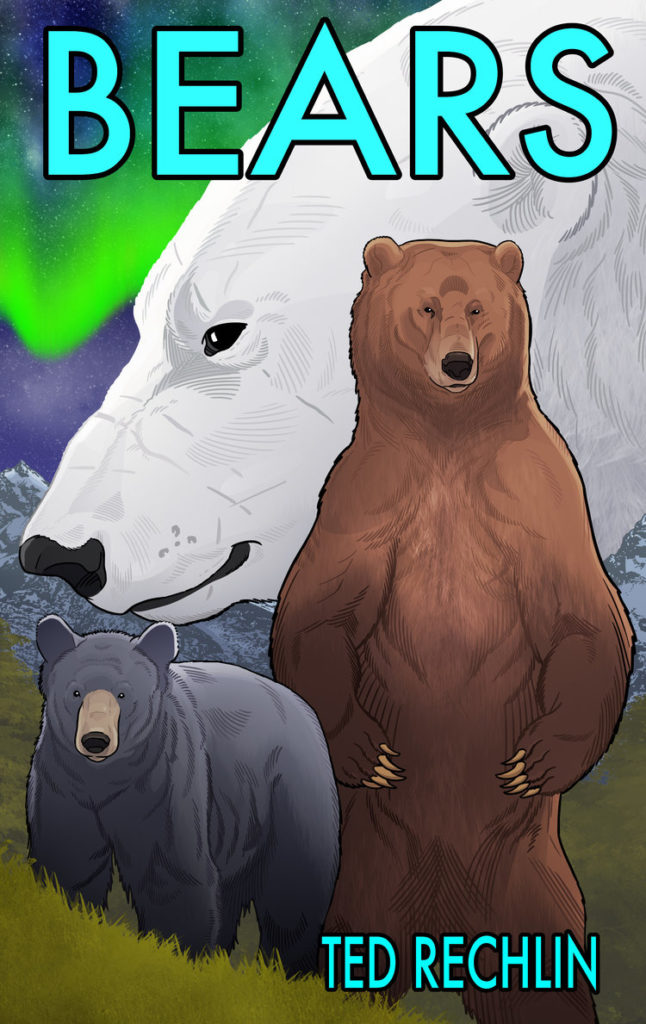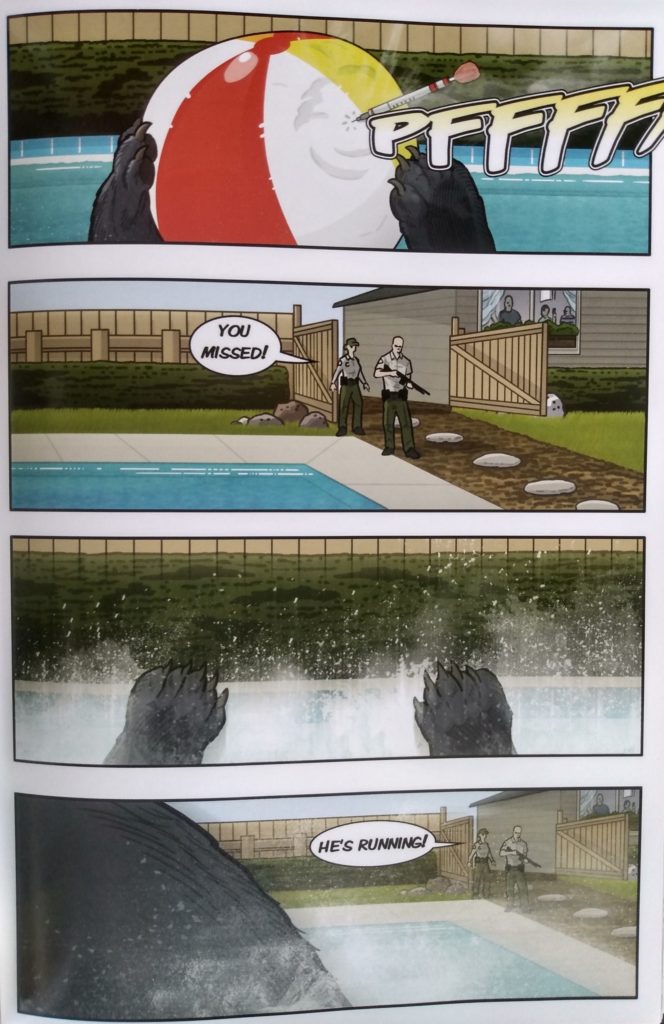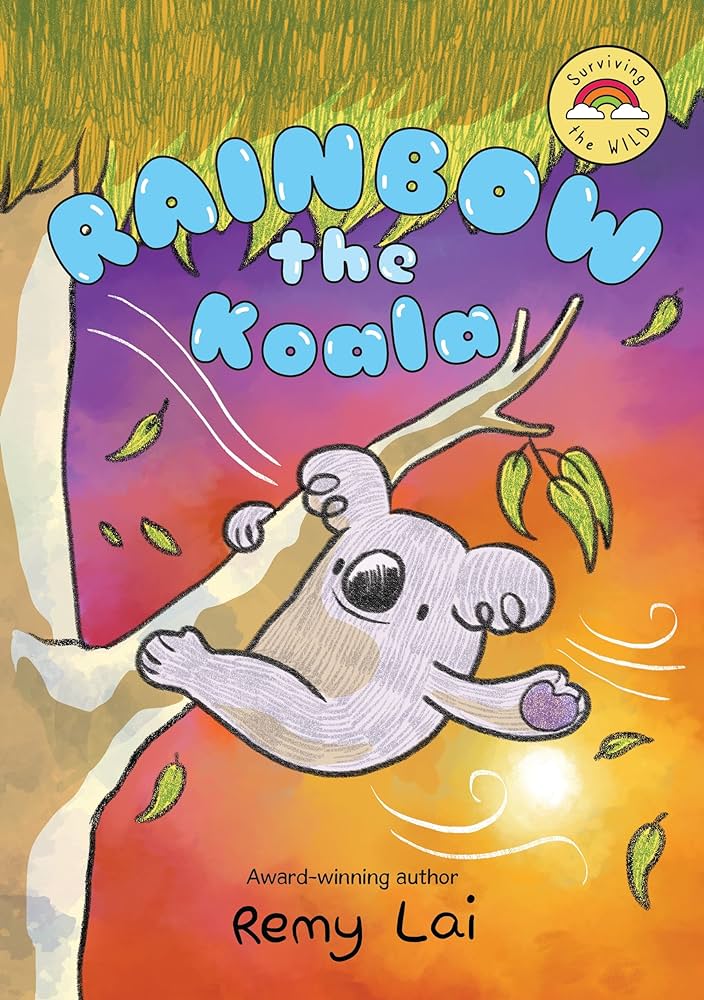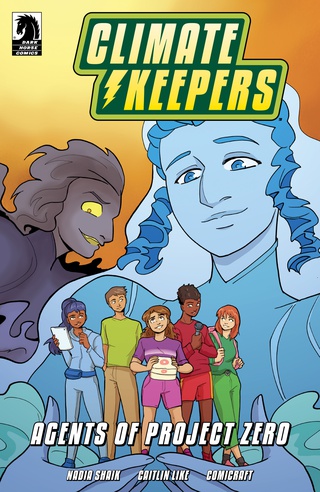“Grizzly bears once roamed across almost the whole of North America. Now they hang on in just a few places–islands of wilderness in a world shaped by people” — Bears, n. pag.
| Creator(s) | Ted Rechlin (author and illustrator) |
| Publisher | Rextooth Studios, distributed by Farcountry Press |
| Publication Date | 2016 |
| Genre | Educational, Nonfiction |
| Environmental Themes and Issues | Climate Change, Educational Nature Facts, Endangered Species, Habitat Destruction, Melting Ice, Tourism |
| Protagonist’s Identity | The comic features short narratives about three bears: a female grizzly bear, a male black bear, and a male polar bear |
| Protagonist’s Level of Environmental Agency | Level 2: Low Environmental Agency |
| Target Audience | Middle Grade (8-12 years) |
| Settings | North America: The Arctic, the Rocky Mountains, and unspecified suburbs |

Environmental Themes
The Bears graphic novel educates middle grade readers about bears and the challenges that the animals face in a world dominated by humans. Creator Ted Rechlin profiles three fictional bears from different species. In part one, a mother grizzly bear raises her three cubs in the Rocky Mountains. In order to protect her cubs from aggressive male bears, the mother takes them out of the mountain backcountry and into the lowlands along the road. There, humans congregate to take photographs of the animals. The bear family also encounters hikers who use bear spray on the mother when she charges them. Rechlin promotes the bear spray as a valuable tool that helps protect the animals, writing, “When bears attack people, it’s bad for everyone. A bear can seriously hurt, or even kill a person. Often, the bear will end up shot and killed too. The best thing about bear spray: EVERYBODY LIVES. The people will go home unhurt–with a story to tell. The cubs don’t lose their mom, without whom they would never make it” (n. pag.). Rechlin also highlights the importance of mother grizzly bears for the whole ecosystem, noting that a single female can raise more than a dozen cubs in twenty years and help sustain the fragile population.

In part two, a young male black bear ventures into the suburbs. Rechlin narrates the section from the perspective of the bear as it knocks over trash cans, swims in a pool, and eventually flees from Fish and Wildlife officers. After a chase through backyards and a downtown area, the officers tranquilize the bear and release it into the wilderness. Finally, part three centers on an old male polar bear as he fights challenging bears, hunts for seals, and finds a mate. The comic emphasizes the impact that climate change has on the bear’s hunting habits: “A few degrees of warmth and what should be ice at this time of year has become ocean again” (Rechlin n. pag.).

While the comic effectively highlights several environmental issues that impact bears–such as conflict between humans and bears, climate change, and tourism–Rechlin doesn’t provide any suggestions for ways that readers can help address these challenges. As a result, the comic is informative, but young readers may not know how to translate their newfound knowledge into environmental activism.
Additional environmental comics created by Rechlin include Howl: A New Look at the Big Bad Wolf and Lions and Tigers.



